Driving in Europe: Top Tips for Happy & Safe Travel
This post may contain affiliate links to products or services I'm happy to recommend. If you click on an affiliate link and then make a purchase, Artsy Traveler may earn a small commission at no cost to you. Thank you!
For North Americans accustomed to wide roads, grid patterns, and lots of traffic lights, driving in Europe poses several challenges. The trucks on the freeways are massive, the streets in old villages are often little more than passageways, traffic can resemble snarled spaghetti, and the drivers are skillful and aggressive.
People drive in Europe; they don’t just cruise.
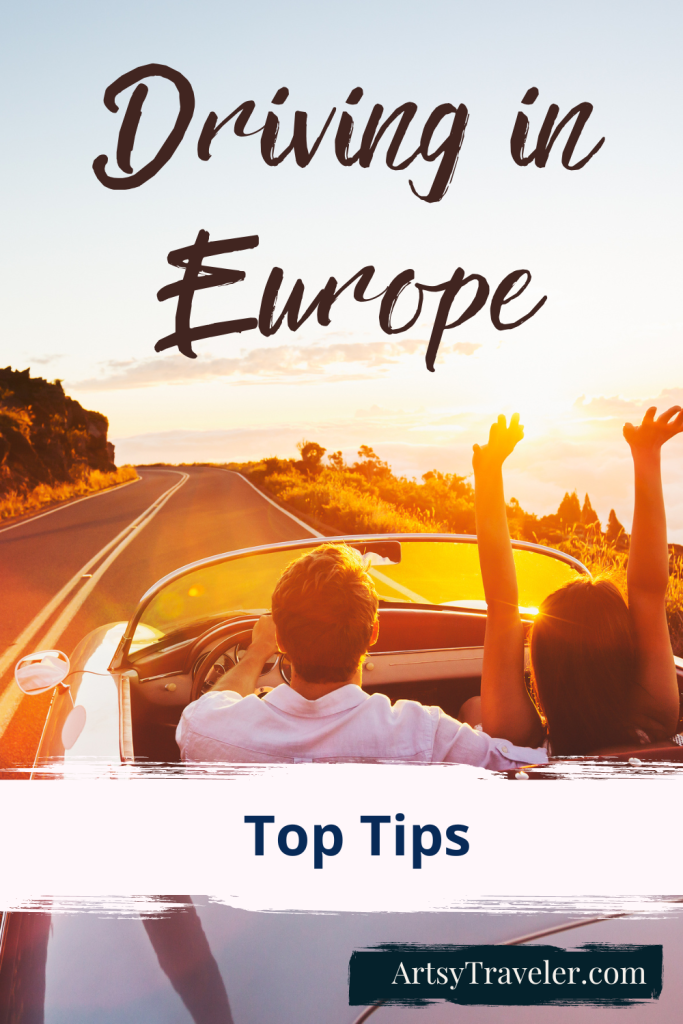
In this post, I share my tips for driving safely and enjoyably in Europe. After reading the post, you may decide not drive, but on the other hand, it may put your mind at ease. We always drive in Europe and highly recommend it (with a few caveats!).
I speak from experience. My husband Gregg and I have taken 16 car trips in Europe—most of them involving a lot of driving. On our most recent trip, we logged over 6,000 kilometers on our drive from Amsterdam through France down to Rome and back up to Milan. Over the past 25 years, we’ve learned a few things.
To Drive or Not To Drive in Europe
First off, should you drive in Europe at all? Trains in Europe are frequent and efficient, particularly for covering long distances relatively stress-free. Also, if you’re traveling solo, trains are cheaper than cars.
However, if you’re traveling as a couple or with three or more people, car rentals can be more economical, depending on how far you plan to travel.
Rail Travel vs. Car Travel in Europe
| Rail Travel | Car Travel |
| Cheaper for solo travelers, particularly with a Eurail pass | Cheaper for three or more people traveling together |
| High-speed trains whisk you quickly between cities | Massive traffic jams and long hours at the wheel are stressful |
| Trains take you into the center of a city | Driving in cities can be challenging and parking is expensive |
| Great if you travel light | Great if you don’t travel light |
| Train service can be sporadic in rural areas | Explore remote corners of Europe with ease |
| Your itinerary is constrained by train schedules | You have complete freedom to go where and when you please |
| More eco-friendly by a country mile | Not eco-friendly, although hybrid rental cars are available |
Rail/Drive Strategy
A good strategy if you want the best of both worlds is to hop on a high-speed train to cover a lot of kilometers quickly and easily (for example, from Paris to Nice), and then rent a car to explore the local area.
On several trips, we’ve taken a train to the area we want to explore then rented a car. We didn’t save much money because fares on the high-speed trains are expensive. However, we reduced the stress of driving long distances on the autoroutes.
For information about car rental and rail travel costs, see Nine Steps to Planning Your Perfect Europe Itinerary.
If you decide to drive at least part of the time while in Europe, consider these recommendations to ensure a positive and safe driving experience.
Get an International Driving Permit
To drive in western Europe, you’ll need your passport and the driver’s license issued by your country. Do you need an International Driving Permit? You’ll hear conflicting opinions, and in 25 years we’ve never been asked to show one. However, for minimal cost, you’re wise to get one just in case.
An International Driving Permit (IDP) is an official translation of your driver’s license. Contact your local Automobile Association to apply. The cost is about $20 along with two passport-sized photos.
If you get into an accident, having an IDP will make your life easier, especially if the local police officer doesn’t speak English. Technically, you’re required to carry an IDP in Austria, Bosnia-Herzegovina, Croatia, Greece, Hungary, Italy, Poland, Romania, Slovenia, Slovakia, and Spain.
Get the IDP well before you leave for Europe. Once you’re in Europe, you can’t apply for one.
Choose Your European Rental Car
Your first task, once you’ve decided to drive in Europe, is to find and rent your car. I favor the Auto Europe site; it’s a one-stop shop where I can find both short-term car rentals and long-term leasing arrangements.
Following are suggestions for selecting the best car for the best price.
Pick up your car at the airport
On the Auto Europe booking site, you specify where you want to pick up and drop off your rental car. I suggest you avoid picking up your rental car in the center of a city.
Driving a new car is stressful enough without also having to navigate unfamiliar streets and roundabouts (more on roundabouts later). Leave the weaving in and out of local traffic until after you’ve experienced a few solid hours of highway driving.
When you choose an airport pickup, you almost always get right onto a highway within minutes of exiting the rental car area. Driving along a straight highway gives you breathing space to get accustomed to the car and traffic flow.
Avoid picking your car up as soon as you land in Europe. Instead, grab a taxi into the city and spend the first day or two recovering from jet lag and enjoying some stress-free, driving-free sightseeing.
After a few days, take a taxi or shuttle back out to the airport, pick up your rental car, and head out on the open road.
Drop off your car at the airport
Dropping your car off at an airport is usually a breeze. At most airports, as you approach the Arrivals area you’ll see a Rental Car Return sign. Follow the sign, find your rental car company, unload your stuff, throw away the accumulated debris of a great vacation, and you’re good to go.
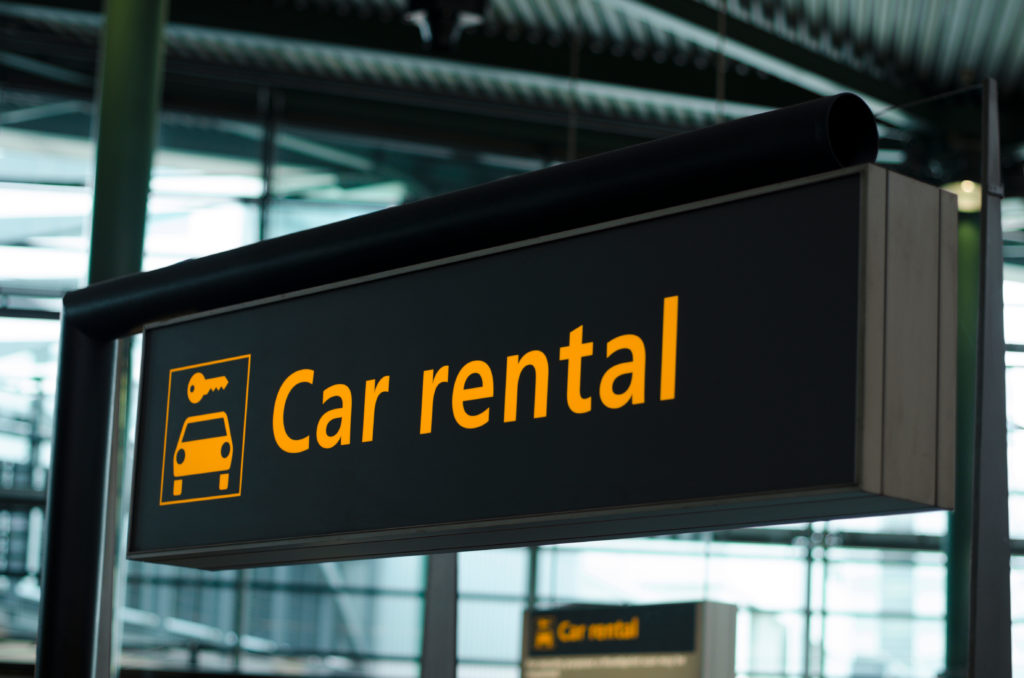
I suggest you drop off your car at the airport in the city where you plan to spend your last few days before leaving Europe. From the car rental drop-off, trundle your luggage over to the taxi rank outside Arrivals and ride into the city in style.
I guarantee you’ll feel incredibly relieved to have returned the car and survived another car trip without incident.
On our trip in fall 2022, we flew to Amsterdam and spent two days in the center of the city. We then caught a taxi directly to the Renault office about twenty minutes away and picked up our Renault Dacia Duster. Eight weeks and many, many kilometers later, we dropped the car at the Renault office on the outskirts of Milan, took a cab into the city, enjoyed two days touring Milan, then flew home.
Go open-jaw in Europe
And speaking of picking up a car in Amsterdam and dropping it off in Milan, why not consider the open-jaw rental? By open-jaw, I mean picking up your car in one city and dropping it off in another. This option works well if you’ve also booked open-jaw flights.
Most car rental companies will charge a fee for dropping off a car in a different location. On the Auto Europe site, you can enter various scenarios to determine costs.
Consider the cost difference between dropping off your car in another location and driving back to your pick-up point. Often, you’ll find that the cost of driving back to where you started is significantly more than the one-way surcharge.
Rent the smallest car you can manage
Over the years, we’ve noticed European cars getting bigger and bigger. Now we never have trouble renting an SUV-sized vehicle, which works well because often we’re transporting boxes of paintings.
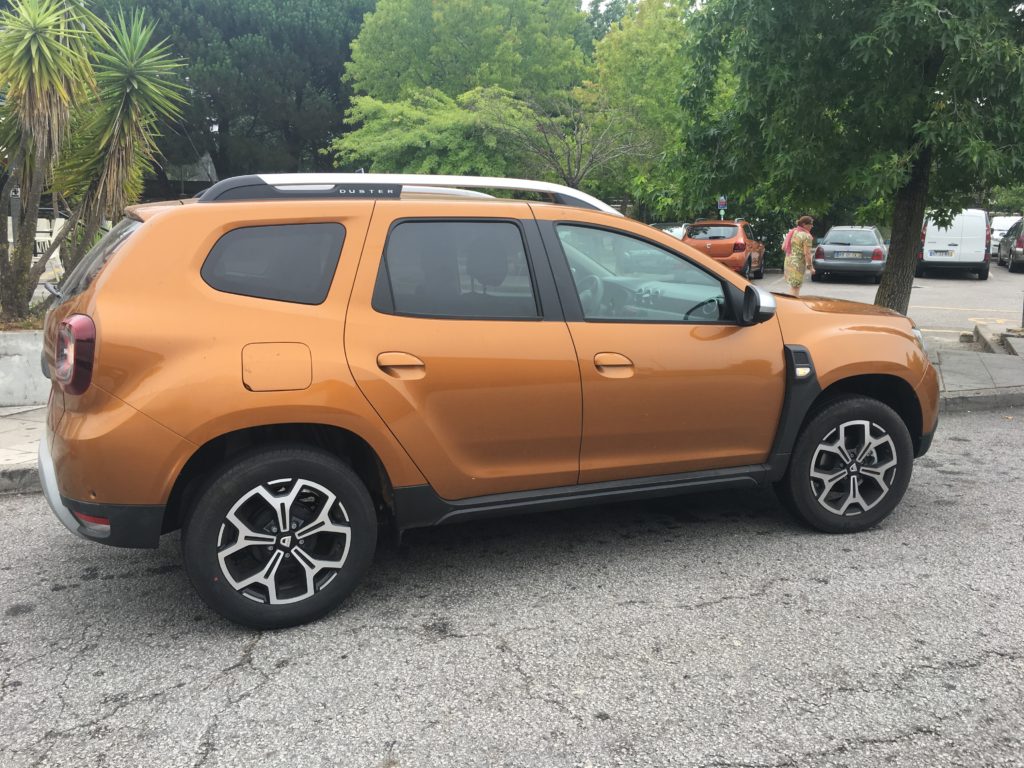
But you’ll save money if you opt for a smaller car. Your gas costs will be lower as will your carbon footprint. A small car will squeeze through narrow streets in towns and villages but can be cramped if you’re driving long distances.
Rent a car with automatic transmission
Yes, I know that automatics cost more than standards. Believe me, I know. And many times, I’ve opted for a car with manual transmission to save money, but I don’t recommend it unless the driver really loves shifting gears and is good at it.
Gregg, who does all the driving on our trips, loves driving standard, but even he concedes that automatics are preferable if our budget allows. Too many times, we’ve found ourselves stuck on precipitous hills with the clutch screaming and the heavy car inching backwards towards a sheer drop into a deep canyon. I close my eyes tightly and hang on. Prayer is sometimes involved.
On one memorable trip, Gregg couldn’t figure out how to put the car into reverse. The guy at the car lease place had explained the tricky reverse mechanism (a little ring under the gear shift), but he’d explained it in French. We thought we’d understood the instructions, but it turned out we had not.
A week later, we nearly ended up sliding into the ocean beneath the parking area near Mont Ste. Michel. I still break into a cold sweat whenever I think about it.
Another reason for getting an automatic transmission is that Europe is not a flat continent. Many times, we’ve found ourselves driving up switchbacks so steep the back of my skull dented the headrest. Gregg had to gear down to first, and even then, it was touch and go.
So yeah, pay the difference and get an automatic. You’ll add years to your life.
Consider leasing a car in Europe
If you’re traveling in Europe for more than three weeks, consider leasing your car instead of renting it. Leasing is much cheaper for long-term rentals. When you sign a lease contract, you essentially buy the car, drive it for the specified period, then return it.
We’ve saved thousands of dollars by leasing a car because first, the lease rates are lower than rental rates, and second, all the taxes and insurance charges are included in the lease rate. When you rent a car, the price quoted is typically exclusive of insurance costs which can be high.
We use the Auto Europe website to find companies that offer leasing deals. Most of the time, we’ve leased from Renault and have never been disappointed.
You’ve picked up your car, learned how to operate the windshield wipers, started the GPS, and found the plug-in for your phone. Time to set off!
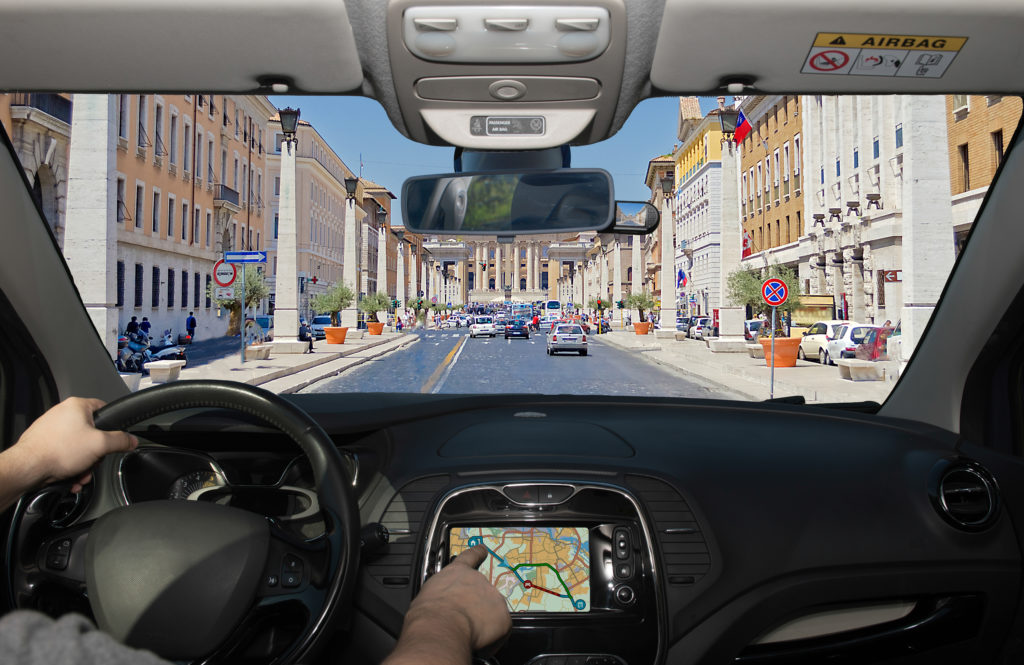
If you’ve picked the car up from the airport, you’ll be out on the open road in no time. Merge onto the highway and head to your first destination.
When you’re trip-planning, make your first destination one that’s a few hundred kilometers along a main highway from your pick-up point. At the beginning of your car trip in Europe, you’re not yet familiar with European traffic patterns. Driving on a main highway is much easier than navigating unfamiliar roundabouts and turns.
Use GPS and Google Maps
The most challenging thing about driving in Europe is navigating the vast network of roads. Driving in Europe is a two-person job—one person to drive and one person to navigate.
I use both the Google Maps on my phone and the Global Positioning System (GPS) that’s often included with the car rental or lease. To minimize confusion, I mute the car GPS and listen to Google Maps with one earbud in. I then direct Gregg.
This method avoids the confusion that can arise when I decide to override the GPS. The driver has to keep up with traffic, change lanes, and have eyes in the back of his or her head. The less GPS chatter, the better, we’ve found! Also, those GPS voices can be annoying.
In our experience, GPS has its benefits, but it does not prevent getting lost. Many times, we’ve driven in circles, me yelling at the GPS lady (like she’s real) and Gregg weaving in and out of traffic, his hands clenched in a death grip on the steering wheel.
Supplement GPS with paper maps
When you’re driving long distances in Europe, pick up a paper map from a gas station. Zooming in and out of Google Maps on your phone can get tiresome. With a paper map, you see the big picture of your journey at a glance.
Choose your routes wisely
Pay attention to how the road looks on Google Maps. If it twists and turns like a demented roller coaster, reconsider your route.
Some mountain roads in Europe are extremely steep and treacherous. You won’t get far, even after hours of driving. Also, if the route is scenic, the poor driver will be so busy trying to keep everyone alive that s/he won’t be able to enjoy the view.
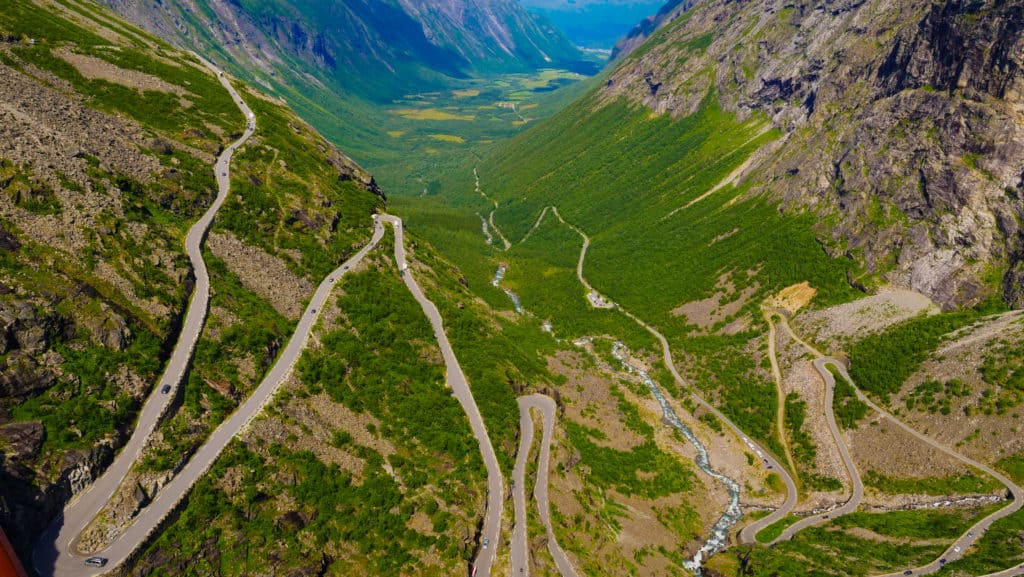
Super-winding and steep mountain roads are also narrow and can be nail-bitingly difficult to drive. If you want to explore the mountains, park the car in a nice, flat lot and go for a hike.
Check GPS for road slow-downs
On Google Maps, the route changes color to reflect the traffic flow. Ideally, you want your route to be green. If the route ahead turns red and stays red for a long distance, find a different route, if possible.
Sometimes, construction on major highways can delay you for hours.
Driving on Highways in Europe
Gas up frequently
And speaking of slow-downs from construction, always make sure your gas tank is at least half full. Imagine getting stuck in a three-hour traffic jam (oh yes, we have!) and discovering that you are almost out of gas.
Make it a habit to top up your gas tank as soon as it’s half empty to avoid nasty surprises.
Watch out for radar
Picture this: three months after you arrive home from your European vacation, a letter arrives. You open it to find a speeding ticket written in several languages and with a hefty fine attached.
Depending on the country that issued the ticket, you may be able to pay online with your credit card. Other countries require you to go to the bank to arrange an expensive wire transfer.
Either way, you’ll be out a fair whack of dough, usually about €80 or more. I know. It hurts.
Radar is everywhere in Europe. Even if you have GPS that warns you about an upcoming speed trap, you’re not safe. The only way to never get a speeding ticket is to always drive the speed limit, even when other cars are whizzing past you.
Drive defensively
European highways are generally wonderful. In some countries, such as Portugal, the highways are virtually empty. In other countries—notably the Netherlands and Belgium—the highways can be plugged solid with massive trucks.
We’ve learned to avoid the Antwerp area when we’re driving from Amsterdam into France. For some reason, every time we’ve driven near Antwerp, we’ve ended up in a mammoth traffic jam, often sandwiched between trucks the size of Tyrannosaurus Rexes.
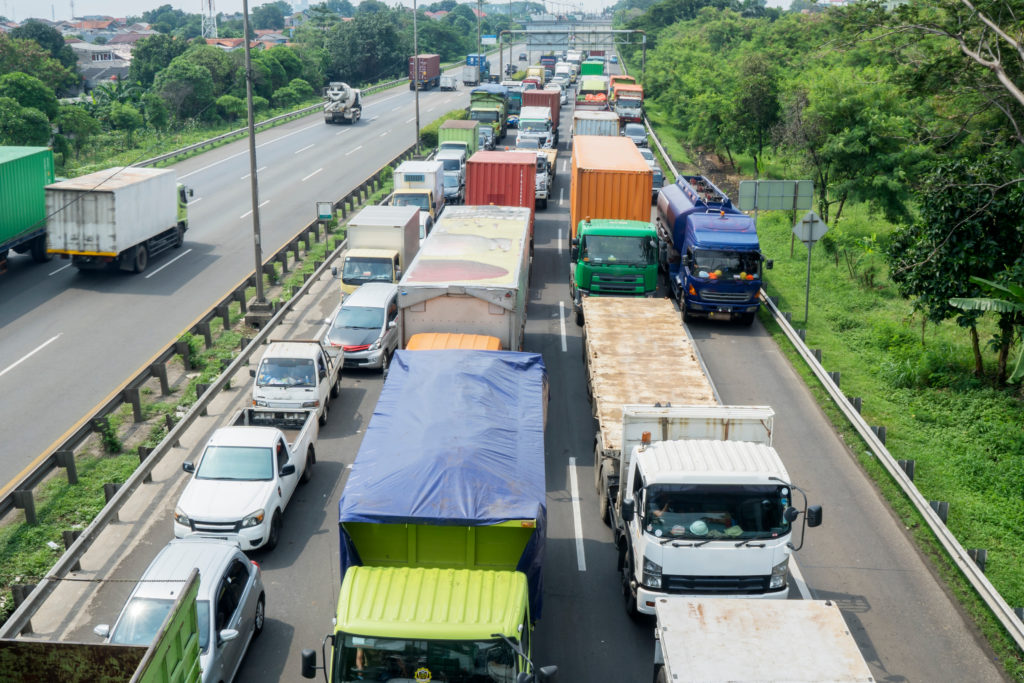
Here are tips for driving comfortably on highways in Europe.
Stay out of the passing lane
You’re driving along a typical three-lane highway in Europe. You check your rear-view mirror and see nothing for miles, so you signal and move into the passing lane to pass a slow-moving truck. Seconds later, a sports car is right on your bumper, so close you can see the driver gesticulating and cursing.
Yikes!
Pull over quickly and hope you don’t need to pass another truck until your heart rate slows.
The passing lane on European highways is intended to be used to pass slower moving vehicles, but, in reality, it’s the playground for the fast and furious, particularly in Italy and Germany. Just keep your wits about you, and as soon as you pass a car, move back into the middle lane.
Stay out of truck areas in rest stops
When driving on the major autoroutes in Europe, you’ll come across rest stops that typically include a gas station, restaurant, play area, and picnic tables. Over the course of many European driving trips, we’ve become fond of European rest stops. The French ones are our favorites—good food, clean facilities, and even gift shops selling local specialties.
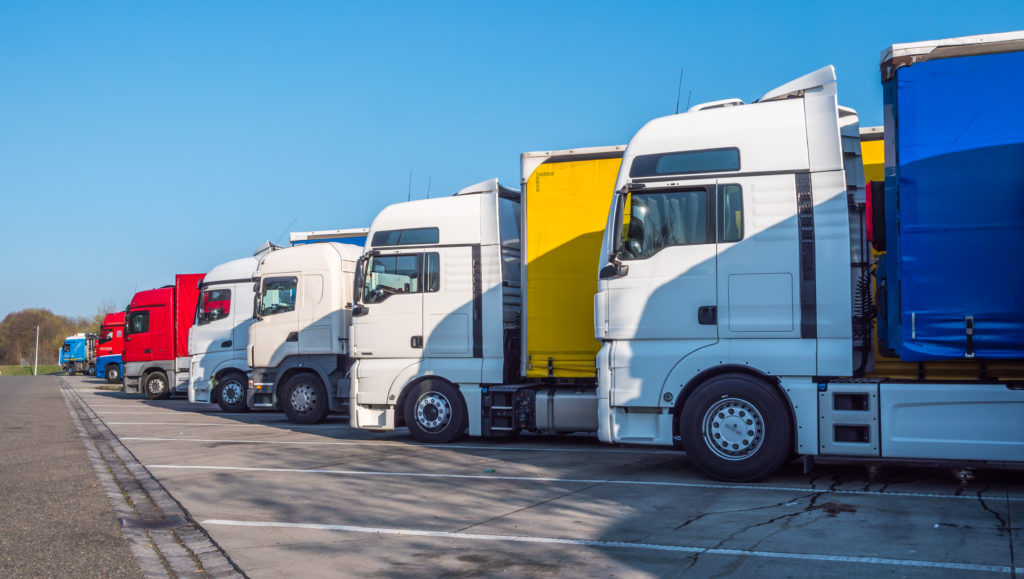
When you exit the autoroute to enter a rest stop, follow signs to the parking area for cars, rather than the separate parking area for trucks. If you enter the truck area by mistake, you sometimes aren’t able to double back and are forced to re-enter the highway and drive on to the next rest stop, which could be 50 or more kilometers away.
Use toll roads wisely
Tolls are an expensive fact of life in several European countries, most notably France and Italy. You pay tolls on the autoroutes (freeways) according to the distance you travel.
Take a ticket when you enter the autoroute, drive to where you want to exit the autoroute, and then pay the toll according to the distance you traveled.
Do not lose your ticket! If you do, you’ll be charged for the entire length of the autoroute, regardless of how far you actually traveled. Losing your ticket is an expensive mistake.
I know because we’ve made it a few times!
A good practice is to put the ticket in the same place every time, preferably in a spot where it won’t blow away or drop between the seats. The ashtray is a good choice.
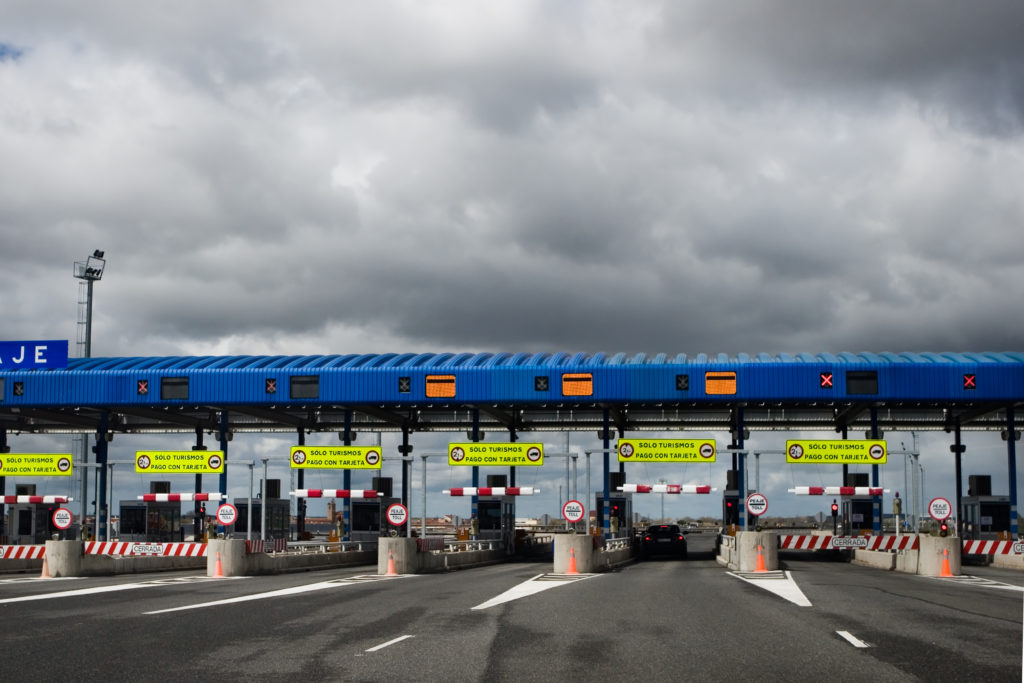
When you exit the autoroute, insert your ticket into the machine, and then use your credit card or cash to pay the required amount.
On a long trip, autoroute tolls add up. For example, to drive from Paris to Nice on the autoroute, you’ll pay about €78. And that’s in addition to gas costs which are roughly double what you pay in North America.
Avoid tolls by driving on regular roads instead of autoroutes. You’ll see more of the countryside at a slower pace than you will whizzing along on the autoroute. We use the autoroutes to get from A to B (for example, Paris to Nice), and then take secondary roads for sightseeing.
Driving in the Country in Europe
One main reason to rent a car in Europe is to explore some of the most beautiful countryside in the world. Explore off-the-beaten-track attractions, stop to have a picnic on a deserted beach, park outside the walls of a medieval village, then stroll through tiny cobbled streets to the town square.
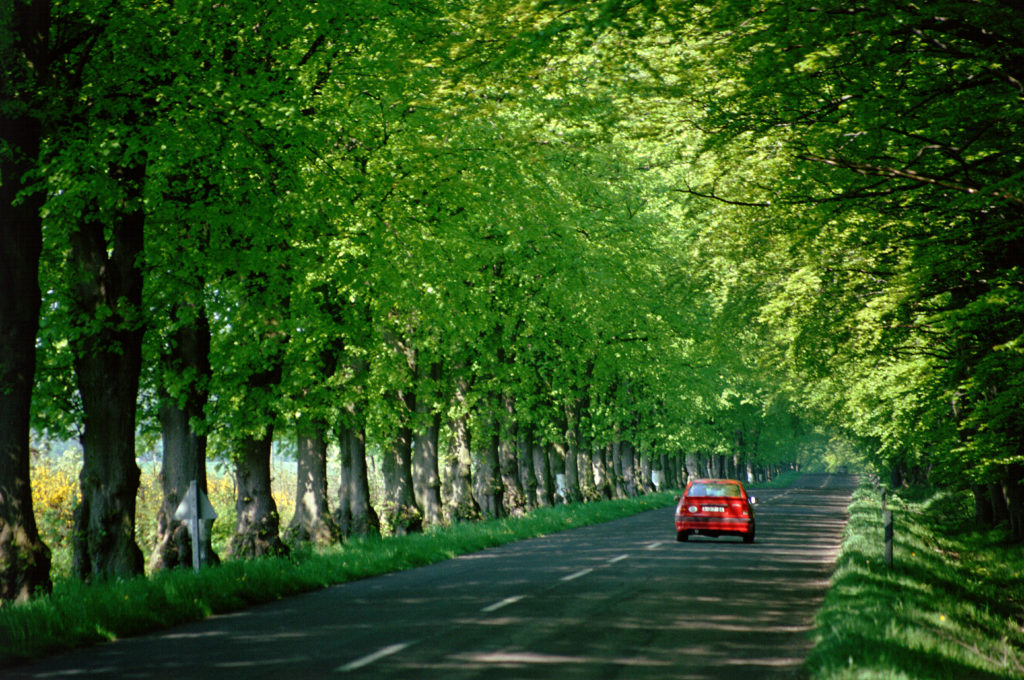
Drive country roads
Some of the roads you’ll drive on in the country will be one lane only and will have more turns and bends than feels decent. Slow down and watch for mirrors attached to poles at blind corners. Check these mirrors to see if another car is barreling toward you.
If you see a car, pull to the side and let it pass. The driver is probably a local who knows where s/he’s going.
If you come to a blind corner and don’t see a mirror, tap your horn to warn anyone coming in the opposite direction.
And if you do round a corner and see someone coming straight at you, don’t panic. Pull to the right and know that the other driver will do the same. European drivers are accustomed to driving in tight spaces. They know how to swerve to avoid collisions—most of the time!
The best way to keep your sanity and avoid having a heart attack in a foreign country is to drive slowly and carefully. Expect someone to be coming around a blind corner and be prepared to pull over. Just because the locals drive fast on narrow roads doesn’t mean you should.
Learn roundabout rules
Roundabouts are ubiquitous in Europe, particularly in France. To drive safely in Europe, you need to become one with the roundabout experience.
Watch other cars and carefully follow their lead. If you come to a roundabout and see a vehicle approaching from your left, wait until it’s passed you. The rule is that you never enter a roundabout until your way is clear.
The cars in the roundabout have the right of way.
Once in the roundabout, get into the correct lane for exiting. Sometimes this isn’t easy to do. Rather than risk an accident, stay in the roundabout and go around again until you figure out how to exit.
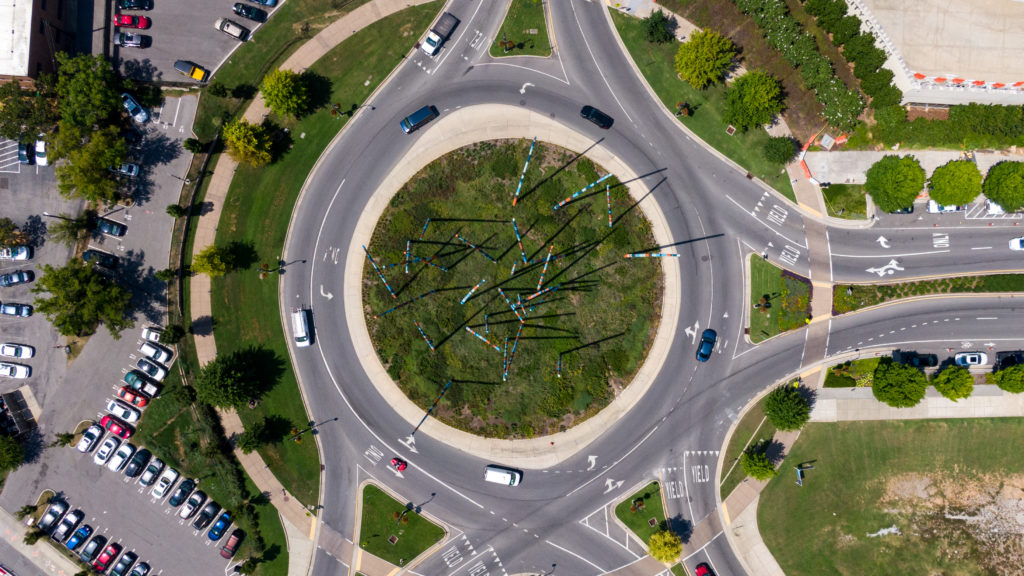
Many times, we’ve circled a roundabout more than once. Sometimes, I’m not sure which exit Gregg should take, so I tell him to go around again while I figure it out. At other times, Gregg can’t get into the correct lane in time to exit.
No one’s keeping score! Just go around again (and again).
Avoid driving in cities
Even with GPS, driving in European cities is incredibly challenging. Traffic is generally horrendous, the drivers are impatient, one-way streets abound, and road works often contradict the route suggested by the GPS.
We’ve driven into the heart of Paris a few times, and I don’t recommend the experience. One memorable time, we drove through the pedestrian-only plaza behind the Pompidou Center into a tiny one-way street going the wrong way. It wasn’t pretty.
When we visit cities, I usually book a hotel on the outskirts, and then take a taxi, bus, or tram into the center to see the sights. Such hotels often have free parking and are close to the autoroutes. While the hotels may not be as authentic and interesting as the ones in the center of an old town, the convenience outweighs the lack of charm.
Sometimes, sacrificing charm for comfort makes sense and saves relationships.
Never drive into a medieval village—ever!
European villages are not made for cars. The streets are narrow, often cobbled, and generally steep. Many European villages are hill towns, because back in the olden days people liked to fight, so building villages on hills that could be defended made good sense.
But in olden times, people were not trying to squeeze an SUV into a space designed to accommodate a mule. Before you get to a village, check your GPS for public parking lots. These are usually conveniently situated at the base of hill towns. Elevators, escalators, or even shuttles are sometimes provided to transfer people up the hill into the town.
Driving Safely
Don’t drink and drive
When you’re in Europe, you could be forgiven for thinking everyone drinks all the time. Wine and beer flow freely, and drinking appears to be the national sport of pretty much every country.
But penalties for drinking and driving can be severe. Leave the car at the hotel and walk to your restaurant for dinner or grab a taxi. In some eastern European countries, such as Hungary and Romania, the permissible blood alcohol level is 0. In France, Germany, Italy, and Spain, the permissible level is 0.5%, and in the UK, the level is the highest at 0.7%.
This article provides details about alcohol driving limits in Europe.
Avoid driving at night
Even with GPS, driving at night can be challenging in Europe, particularly in the countryside.
More than a few times, we’ve gotten lost returning to our hotel or rental house after dark on poorly lit and unfamiliar country roads. Watch for landmarks when you drive a route during the day that you know you’ll be returning on at night. If your GPS doesn’t work, you need to know where you are or risk missing turn-offs.
Getting lost at night in the wilds of Europe is not fun.
Coping with accidents and theft
Thankfully, we’ve never been involved in an accident in Europe.
If you are, immediately call the emergency number provided with your rental or lease car. As a tourist, you’re not in a great position to deal with police in a foreign country. Having an International Driving Permit will be helpful, which is a good reason to shell out the $20 to purchase one before you leave.
For information on how to cope with car accidents, read these guidelines.
Theft is a concern in Europe. Never leave anything valuable in your car. Even at autoroute rest stops, we always take our laptops into the café with us.
We also avoid sightseeing when we have our luggage in our car. Instead, we go directly to our hotel, unload the luggage, and then drive to whatever we want to see—castle, gallery, beach, etc.
Parking the Car
Book hotels with parking garages
In cities, you’ll pay a pretty euro for parking, usually at least €30 per day. When possible, book hotels that include free parking. These hotels are usually located on the outskirts of big cities. We’ve never found free parking at hotels in the middle of European cities.
If you decide to stay in a hotel in the center of a city, make sure that secure parking is available, even if you have to pay for it.
Take pictures in parking garages
In underground parking garages, make a habit of taking pictures of your parking stall, the floor number, and even the exit. More times than I care to admit, we’ve wandered frantically around multi-storey underground lots in search of our car.
Have your credit card ready to pay for parking. The machines often don’t take cash. Take a ticket when you enter the car park. Before returning to your car, insert it in the machine, pay what you owe, take the receipt, then use it to exit.
The system works well – just don’t lose your ticket.
Driving in the UK
In the UK, always look both ways several times before pulling out, particularly on busy roads.
If you’re from North America or any country that drives on the right, you’re in the habit of looking left before you pull out to turn right. If you do that in the UK without also looking to your right, you could be killed. I’ve had a few close calls.
Also, in the UK, be careful driving on country roads with no lines. You may naturally drift over to the wrong side of the road, with dire consequences if you encounter oncoming traffic.
Last Words on Driving in Europe
Driving in Europe is challenging. You need steady nerves, good reflexes, and a good navigator. If you enjoy driving and have plenty of experience driving in heavy traffic and finding your way on unfamiliar roads, then go for it.
If you choose not to drive, there are options for exploring the countryside. Book the occasional small group tour or, if you’re traveling with three or more people, hire a driver for the day. Even doing so three or four times during a trip will cost much less than renting a car and paying for gas, tolls, and parking.
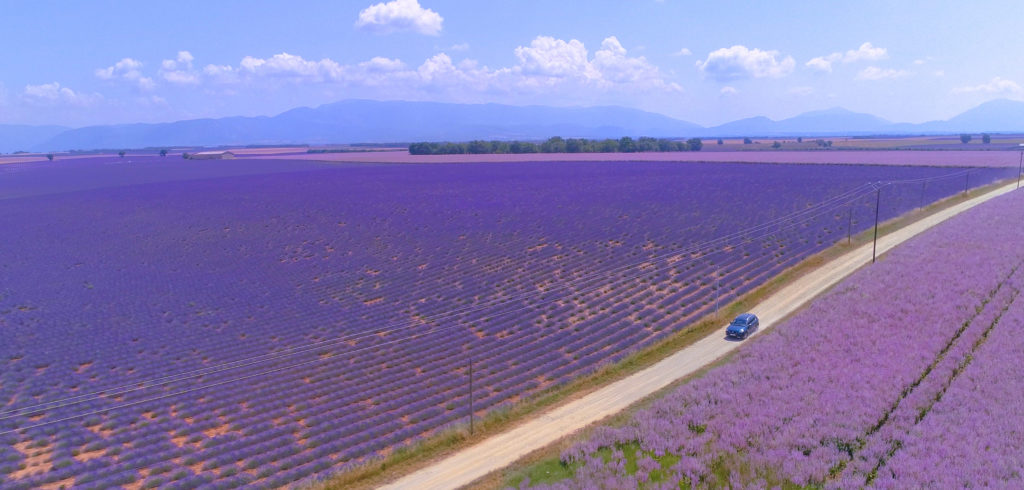
When I travel solo, I never rent a car. I take trains and busses between cities and towns, hop in taxis to get to my accommodations, and book small group tours to explore the countryside.
When Gregg and I travel together, we almost always rent a car because we like the increased freedom to go where we want when we want. That said, we breathe a heartfelt sigh of relief every time we return the car, unscathed.
Have you rented a car in Europe? Share your experiences and recommendations with other artsy travelers in the Comments section below.
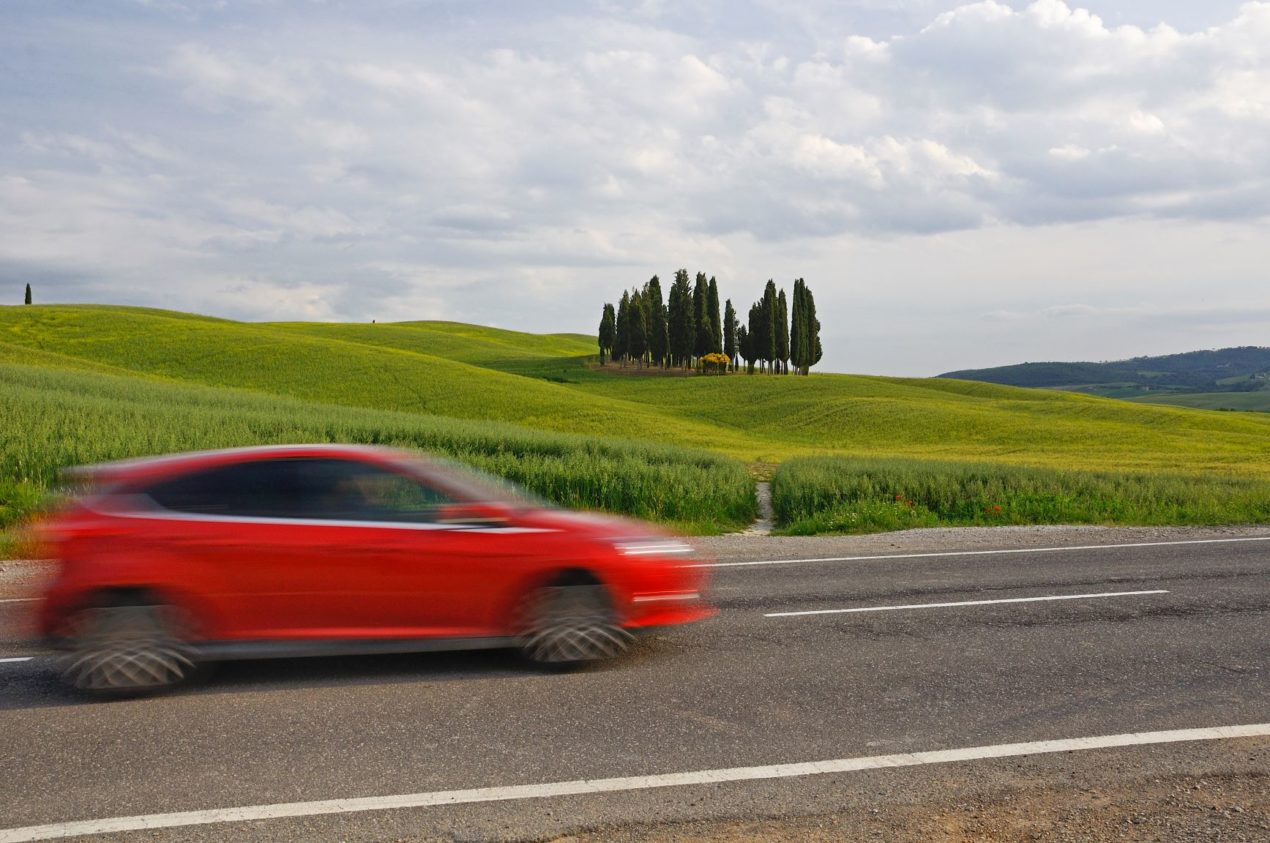

[…] Drive in Europe […]
[…] Drive in Europe […]
[…] Drive in Europe […]